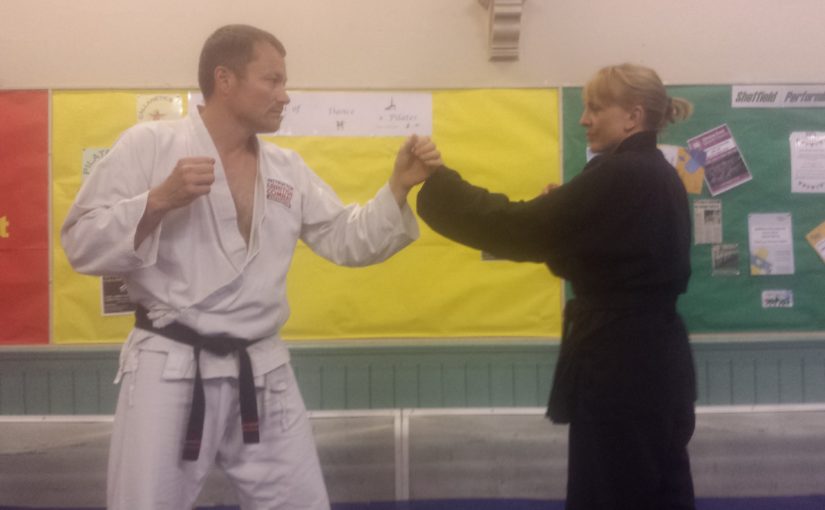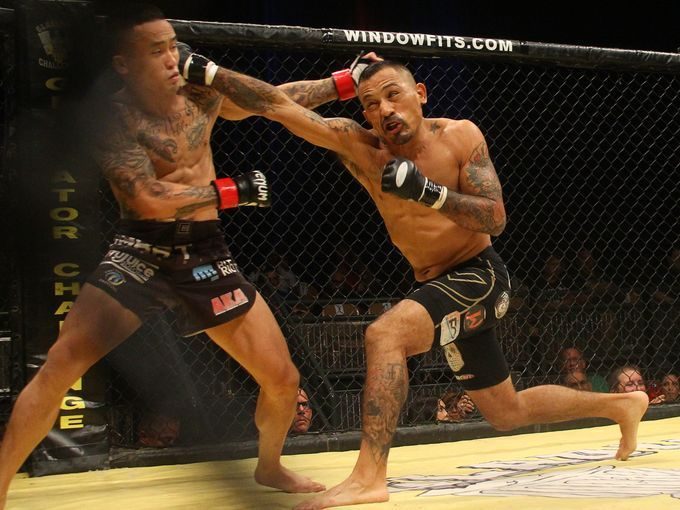Real Life Levels of Resistance
Professionals and people who train professionals must understand the levels of resistance thoroughly. The level of danger and the dynamics of the force situation determine what is appropriate. Using too little force will get one hurt, using too much force gets one sued.
For civilian self-defense instructors as well, it is imperative to understand how different the body mechanics and psychology of different real-life attacks can be from any sport, training, or simulation experience. Overcoming a high level of resistance is very different than overcoming a low level of resistance.
Cooperative, compliant (and undecided.)
Cooperative and compliant are not really levels of resistance. I list them to remind professionals that there are levels that require no force. If you say, “Sorry, folks, but this street is closed off. We have a situation.”
And the person says, “Oh. Thank you officer,” and takes another route, that person is cooperative. If the person grumbles, “Dammit, now I’m gonna be late,” and takes another route, the person is still compliant. These are the good guys. The citizens you are sworn to protect. They are not targets for force or shows of authority. Never bully your allies.
The undecided threat should rarely, if ever, go to force. As a rule, if you address an undecided threat and it goes to force, you fucked it up. You shifted it from undecided to resisting.
An undecided threat can present in a number of different ways and can be triggered in different ways.
The two most common versions of undecided threat that a professional will face are the coward and the indignant.
The coward will become a physical threat if and only if he thinks he can get away with it. An officer who maintains good presence, awareness, and control of space leaves the coward with no opening. Without an opening, most cowards will comply and many will shift to cooperative, sucking up. Don’t lower your guard,
The indignant will fight if they can find an excuse— if they see something in your demeanor or hear something in your words that lets them blame you. A “hook” is an excuse to blame the victim that triggers and rationalizes an act of violence. That’s not just for undecided against a professional. Many violent people like to have a justification, to be able to say, “The bitch was askin’ for it.”
The solution for professionals is to be professional. Doing a job impartially and fairly leaves no hooks. Understand, however, that this applies only to the undecided. People who have already decided to be violent will find, manufacture, or imagine hooks to justify their violence. Look at any riot.
That said, if you’re a dick you can set off an undecided. If you’re a big enough dick, you can shift a compliant or even cooperative person through undecided and into full-on resistance. You might do the paperwork and file the charges, but don’t fool yourself. Shifting a good person to a bad person with your attitude is entirely on you.
Passive Resistance.
You politely tell the patron to leave the bar. He says, “No” and turns away. The protesters sit down and refuse to move. Your two-year-old won’t eat his peas.
In passive resistance, the threat’s not a danger to anyone, is not threatening you and is not even using muscle power. It’s a level of resistance rarely addressed in training and it often has complex ramifications. When is making your child eat peas abuse? What level of force will play well on TV when used on people who are not a physical threat but clearly breaking the law?
This level of resistance rarely comes up in self-defense. There’s no need to defend yourself from a non-attack. But for people who have a duty to act this is a common problem.
Active Resistance.
You politely tell the patron to leave the bar. He says, “No. You can’t make me” and wraps his arms around a pillar. The protesters sit down and lock arms. Your two-year-old won’t eat his peas and covers his mouth with both hands.
In active resistance, the threat is still not a threat, still not a danger. The only difference is that the threat is now using muscle power to resist, but not using that power on you. This is the bad guy who runs away, not the bad guy who attacks.
The questions and problems are similar— when and if you have a duty to act, what is the appropriate level of force to overcome very real but not dangerous physical resistance?
Assaultive Resistance.
This is the level of resistance that inspired my initial rant on the Myth of the Fully-Resisting Opponent. This is the other side of the coin from training’s full resistance. This is someone trying to take you out. The threat has chosen time, place and victim. Has stacked everything in his favor—size, numbers, weapons, surprise— and will attack with absolute ruthlessness, speed and power. He gives no thought to defense because he fully expects that his onslaught will prevent you from doing anything he might have to defend against.
Assaults happen faster, harder, closer and with more speed than most practitioners can imagine. Until you have experienced it these words will have no meaning, but your hardest training for the most intense mixed martial art competition is as relevant for an assault as non-contact point sparring is for MMA. Or to put it another way, kickboxing helps with rape defense about as much as being raped will help with your kickboxing.
The nature of assault starts with a bigger, stronger opponent, who has a tool (and you don’t) from behind or the flank and with you psychologically off-guard. It is nothing like sparring at any level.
Lethal Resistance.
Lethal resistance has all of the elements of assaultive resistance but with one other factor: the goal is not to beat you into submission, but to kill you. Sometimes it will start as an assault but with the intent to kick your head into mush afterwards. Other times it is a cold-blooded assassination. Just a knife in your back, quick and clean, with the perpetrator walking away as if nothing happened.
Whether the intent is assaultive or lethal, the bad guy has made the decision to take no chances. That means he has done everything in his power to give you no chance.
Asymmetrical Resistance.
Asymmetrical resistance is probably the most common level of resistance and the least discussed or trained. Violence and exploitation happen in the real world, and the real world is immensely complex. There are many ways to victimize a person and many ways to punish a target for attempts to stand up.
Asymmetrical resistance can take many forms, from exerting psychological control to prevent you from physically resisting to invoking third party intervention against you.
“My brother’s upstairs with your kids. One peep out of you and he shoots them. Do what I say and don’t make a sound.”
“You can’t hit me back. I have AIDS!”
“Hello, Joan, I’m the director of human resources and we’ve had a complaint. Did you tell Frank that he was standing too close to you and making you feel uncomfortable? You did? Well, he’s filed a hostile workplace complaint…”
In real life, whoever plays the game the most broadly has the advantage. Seeing self-defense as either physical skills or reactive skills (see the article “Self Defense Failure Zone” Conflict Manager May 2016 https://conflictresearchgroupintl.com/self-defense-failure-zone-rory-miller-conflict-manager-may-2016/) is inherently limiting. Your goal is to use and see the situation more broadly than any would-be predator.









